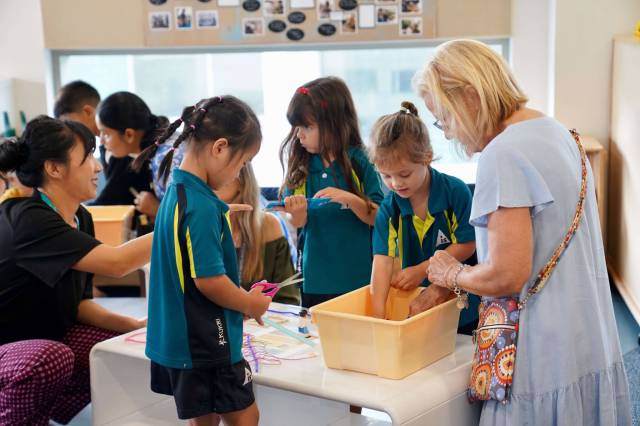Reggio Emilia and Montessori Educational Methods: Differences and Benefits
When it comes to early childhood education, two of the most renowned and respected approaches are the Reggio Emilia and Montessori methods. Both emphasise a child-centred philosophy but differ in their approach to learning, classroom structure, and teacher roles. Here’s a closer look at each method and how they compare.
Montessori Approach
Founder: The Montessori method was developed by Dr. Maria Montessori in the early 1900s, grounded in her belief that children are naturally curious and capable learners.
Key Principles:
- Prepared Environment: Montessori classrooms are meticulously organized to foster independence. Children have access to materials that are thoughtfully designed and arranged to encourage exploration and self-learning.
- Self-directed Learning: In Montessori, children choose their own activities and work at their own pace. Teachers serve more as guides than instructors, stepping in to support learning rather than leading it.
- Multi-age Classrooms: Children of different ages learn together, which encourages peer mentoring and the sharing of knowledge.
- Hands-on Learning: Montessori emphasizes practical, hands-on activities. Specialized materials allow children to grasp concrete concepts, preparing them for more abstract thinking later on.
- Focus on Individual Work: Montessori encourages individual or small-group work. This approach helps children develop self-discipline, concentration, and intrinsic motivation.
- Structured Curriculum: There is a defined set of materials and lessons designed to promote development in areas such as practical life, sensorial activities, math, language, and culture.
Reggio Emilia Approach
Founder: The Reggio Emilia approach originated in Italy after World War II, championed by educator Loris Malaguzzi. It is rooted in the belief that children have a deep potential and should actively shape their own learning.
Key Principles:
- Project-based Learning: Learning is centred around long-term projects that arise from children’s interests. These projects, known as “progettazione,” evolve over time and can last weeks or even months.
- Collaboration: There’s a strong focus on social collaboration, with children learning through relationships with their peers, teachers, and environment. Group work is common, fostering a sense of community.
- Environment as the Third Teacher: The learning environment in a Reggio Emilia classroom is carefully designed to encourage curiosity and exploration. Every space is seen as an opportunity for learning.
- Documentation: Teachers play a key role in observing and documenting children’s learning through photos, videos, and notes. This documentation helps teachers and children reflect on the learning process.
- Emergent Curriculum: Unlike the structured curriculum of Montessori, Reggio Emilia follows an emergent curriculum, meaning that learning evolves based on the children’s interests, with no predefined subjects or materials.
- Creativity and Expression: Reggio Emilia emphasizes creative expression, often referred to as the “Hundred Languages of Children.” This concept recognises the many ways children express themselves, such as through art, storytelling, movement, and play.
Which Approach is Right for Your Child?
Both Reggio Emilia and Montessori place the child at the centre of learning, fostering independence, creativity, and collaboration. However, they differ in their teaching styles and classroom environments. Montessori offers more structured individual learning, while Reggio Emilia encourages collaborative, project-based exploration driven by the child’s curiosity. The right choice will depend on your child’s personality, learning style, and the kind of environment in which they thrive. Choosing the right kindergarten is a significant decision, influenced by each child’s unique personality and learning style. This guide covers key factors to consider when selecting the ideal early education environment for your child.
AIS: A Reggio Emilia-Inspired Approach to Early Childhood Education
The Australian International School (AIS) offers a Reggio Emilia-inspired early childhood program. Rooted in the principles of this renowned educational philosophy, the program emphasises child-centred learning, creativity, and collaboration. At AIS, the Reggio Emilia approach is integrated with the Australian Early Years Learning Framework (EYLF) and the International Baccalaureate Primary Years Program (IBPYP), creating a dynamic, play-based, and inquiry-driven environment.
In a Reggio Emilia-inspired classroom at AIS, children engage in long-term projects based on their interests, collaborate with peers, and are encouraged to express themselves through various creative outlets. The learning environment is seen as a vital part of the experience, designed to inspire curiosity and exploration, while teachers document each child’s learning journey to reflect and support their ongoing development.
This blend of international and Reggio Emilia philosophies helps AIS nurture each child’s intellectual, social, emotional, and creative growth, setting a strong foundation for lifelong learning.
Discover the AIS difference firsthand—book a tour with us today!









